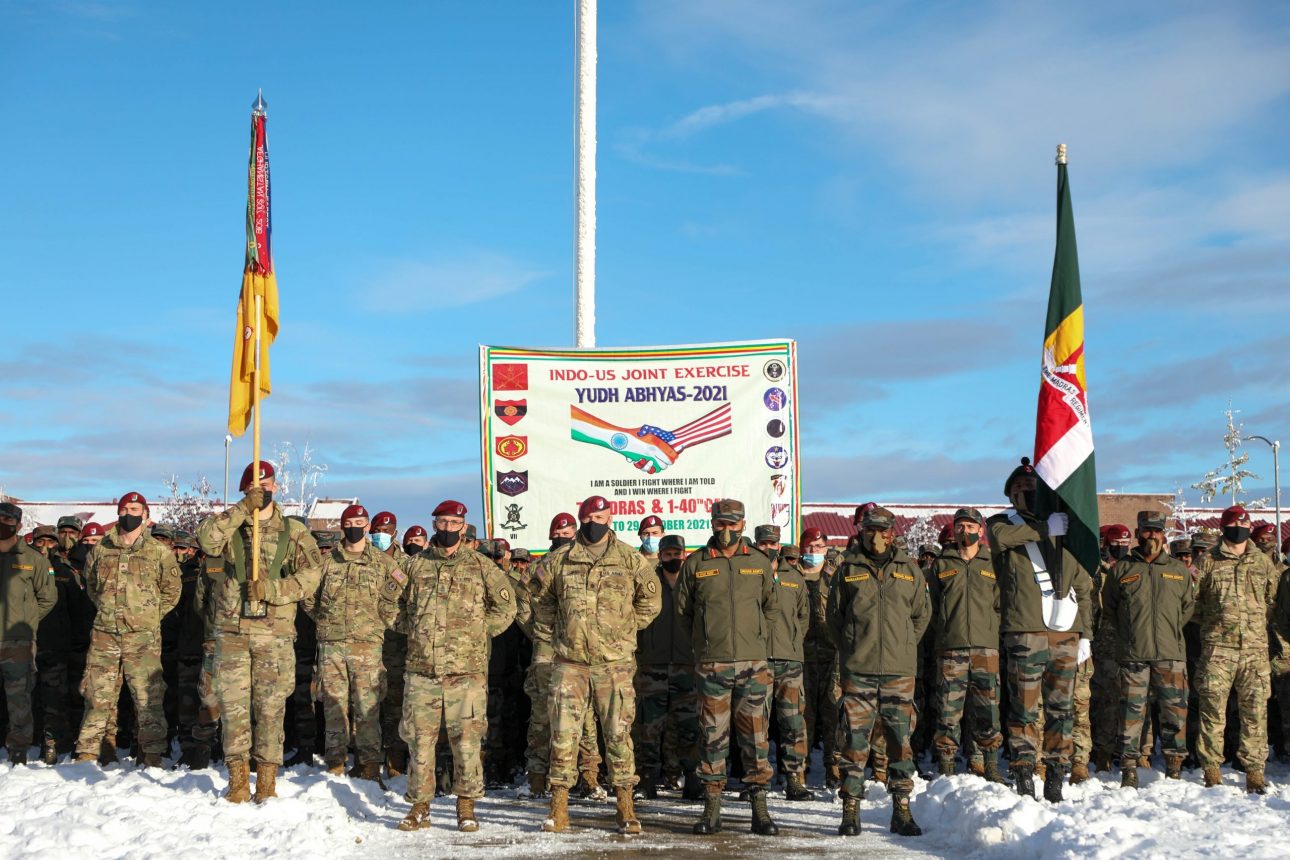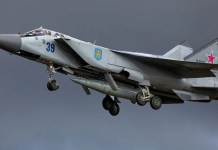As the Indian government cleared the “Agnipath” scheme for recruiting youth in the Armed Forces, purists or conservatives among the military veterans appear to be unhappy with the decision.
Forty-six thousand young persons in the age group of 17.5 to 21 years will be recruited this year (2022) and will be called “Agniveers.”
India’s cabinet, headed by PM Narendra Modi, has cleared the Agnipath scheme and termed it a “transformative reform.” Agnipath roughly translates to Firepath and Agniveer means Fire Warriors or Fiery Warriors.
The Agnipath scheme will provide “A unique opportunity to the youth to serve the country and contribute to Nation Building”; make “Armed Forces profile to be youthful and dynamic”; offer “Attractive financial package for the Agniveers”; train “Agniveers in the best institutions and enhance their skills & qualifications”; offer “Adequate re-employment opportunities for those returning to society and who could emerge as role models for the youth”; and ensure “Availability of well-disciplined and skilled youth with military ethos in civil society.”
After the scheme’s implementation, the average age profile of the Indian Armed forces, which is between 30 and 34 years at the moment, will come down by about 4-5 years, making the Indian military “young and fit,” it is said.
But the scheme is for personnel below officer rank (PBOR) recruited for four years. They would form a distinct rank in the Armed Forces, different from any other existing ranks.
Upon the completion of four years of service, based on organizational requirements and policies promulgated by the Armed Forces from time to time, Agniveers will be offered an opportunity to apply for permanent enrolment in the Armed Forces.
These applications will be considered centralized based on objective criteria, including performance during their four-year engagement period. Up to 25% of each batch of Agniveers will be enrolled in regular cadres of the Armed Forces.
They would be required to serve for a further engagement period of 15 years. They would be governed by the existing terms and conditions of service of Junior Commissioned Officers/Other Ranks in the Indian Army and their equivalent in the Indian Navy and Indian Air Force, and Non-Combatants enrolled in the Indian Air Force, as amended from time to time.
According to the scheme, Agniveers will be given an attractive customized monthly package (Rs. 30,000 in the first year with annual increments to have Rs.40000 in the fourth year) along with “Risk and Hardship allowances” as applicable in the three services. Each month they will be providing a fixed sum to a “Corpus Fund,” and the government will equally match this amount.
On completion of the engagement period of four years, Agniveers will receive a one-time ‘Seva Nidhi’ package, which shall comprise their contribution, including accrued interest thereon and a matching contribution from the government equal to the accumulated amount of their contribution, including interests. The ‘Seva Nidhi’ will be exempt from Income Tax. However, there shall be no entitlement to gratuity and pensionary benefits.

The government says that after their stint of four years, the Agniveers will foray into the civil society, where they can contribute immensely to the nation-building process. Agniveers will receive a certificate for the skills gained.
“The avenues and opportunities that will open up for their progress in the civil world (government and private jobs) after Agniveer’s tenure would certainly be a big plus towards nation-building.
Moreover, the ‘Seva Nidhi’ of approximately Rs 11.71 lakh would aid the Agniveer to pursue their future dreams without the financial pressure, which is normally the case for young people from the financially deprived strata of society”, according to the announced scheme.
Agnipath Scheme – Criticism Galore
However, the scheme is not without criticism. Many veterans such as Lt. Generals KJ Singh and Jaishankar Menon and Major Generals like V K Madhok and Raj Mehta have argued against Agneeveers.
They are concerned that a combat soldier cannot be trained in four years, and the scheme thus compromises national security.
As Colonel Rathore agrees with these veterans, “the idea of shortened training spell indirectly trivializes the skill-sets for which the armed forces train their cadres so diligently. For instance, the Army alone has over 150 trades, which is peculiar.
The tenure of a soldier or sailor or airman under the Agnipath scheme would be chock-a-block with activities. In his four-year tenure, the recruitment training, authorized leaves, and temporary duties would eat up to 90 weeks.
Is it possible to groom a green soldier as a missile pilot, a tank and artillery gunner, a machine gunner, a vehicle driver, or even a scout who moves ahead of an infantry section in the remaining period and then loses him?”
Thirdly, they argue that retrenching youth from the armed forces after four years will create security problems. Given the experience of retired soldiers at the age of 38, it is complicated to get absorbed into the paramilitary forces. In other civilian sectors, mostly the retired armed forces personnel get jobs as guards in the private security agencies. Mostly, they cannot find respectable employment and are dependent on their pensions and other post-retirement benefits.
However, in the case of Agneeveers, so run the arguments, as they will be leaving the armed forces at a tender age of 21 to 25, they can, if unemployed, fall prey to the lure of crime syndicates, radical political outfits, and worse the foreign intelligence agencies.
Trained in handling weapons and explosives and having the basic knowledge of military establishments functioning, such a person can be a real security threat. Some of the more enterprising ones could join the overseas mercenary groups and private military contractors (PMCs). After all, in Ukraine today, many PMCs are fighting for that country.
Agnipath Scheme For Indian Army
But then, these are the criticisms, in some form or the other, have been there ever since the idea, called Tour of Duty then, was mooted by Prime Minister Narendra Modi in December 2015 and pursued vigorously by late Defence minister Manohar Parrikar and late Chief of Defence Staff Bipin Rawat (he was highlighting it even as the Army Chief).
Parrikar and Rawat believed the idea should be first applied to the Indian Army. Though the scheme announced will cover all three services, the Army will be tested the most for all practical purposes.
A significant concern of the government has always been that “manpower costs are also eating into the capital allocation of the armed forces to cover revenue demand.” budgetary constraints happen to be a significant factor in this decision. For instance, India’s defense budget for 2022-23 is Rs 5.25 lakh crore, of which Rs 1.2 lakh crore is for the pension component, let alone the salaries.
As Amit Cowshish, a retired senior defense ministry official, says, of the total defense budget this year, 44.37% is earmarked for the services’ revenue expenditure, 29.01% for meeting their capital requirement, and 22.79% for defense pensions. And salaries plus pensions account for 55.3% of the services’ total revenue budget.
In the Indian Army, the largest of the three services, salaries account for an even higher share of the revenue budget. From 69.16% in the current fiscal, this goes up to 70.78% in the FY23. To put it in perspective, it was 60.92% in 2010-11.
Cowshish’s point is that salaries and pensions of the three services (armed forces personnel, auxiliary forces, and the civilians working in defense establishments) have been increasing steadily as a revenue budget. It has risen from 61.98% in FY22 to 64.1% in FY23.
Against this background, it is reportedly estimated that the “prospective life-term saving” in the cost of engagement of a jawan who leaves after 17 years of service with pension and other benefits, as compared to an Agniveer, will be Rs 11.5 crore.
National defense budget management is essential. There has to be a significant percentage for Capital acquisitions. No major country can afford to have adverse capital to revenue expenditure and pension bill ratios. The modernization of the forces is essential.
And one of the best ways to achieve the above is to reduce the workforce. In fact, in the last 25 years, all major armed forces have cut the workforce.
Leaner, Meaner Army
In 2003, China decided to trim down its then 2.5 million-strong force. President Xi Jinping has repeatedly talked of reorganizing China’s military to create a leaner army. At the moment, its Army is 2.3 million strong. Xi reportedly wants to bring it under 1 (one) million.

On the other hand, China would like to increase its Navy and Air Force size and make all the forces high-tech, depending on robots or Artificial Intelligence (AI). Xi recently said, “quantity should be reduced, quality improved to build a capable and efficient modernized standing army.”
In 2012, Great Britain announced a 20% cut, reducing its strength of the Army to 82,000 combatants by the end of the decade. And going to the UK 2021 Defence Review, entitled ‘Defence in a Competitive Age,’ the United Kingdom’s Army is about to shrink further to 10,000 soldiers to augment and modernize technological investments.
The Defence Review says that £23 billion has been set aside for funding in such specialized areas as the new National Cyber Force, Autonomous weapons Systems (AWS), and Space.
Rejecting the theory of classic hard power and troop size, Russia under President Vladimir Putin has turned its military into a lean and quick-strike force. Nowadays, Russian soldiers fight out of brigades, not large divisions.
Similarly, the United States has decided to have smaller and leaner armed forces, given the financial constraints that the country is facing right now. The Pentagon has been asked to massively cut its budget by several hundred billion dollars.

The US Army is reportedly preparing to downsize 40,000 more active-duty personnel from 490,000 to 450,000. However, the Navy, Marine Corps, and Air Force will experience much smaller force reductions. At the same time, care will be taken to ensure that the decrease in manpower will not compromise the fighting capabilities of the US military.
Similarly, the Modi government stresses that a leaner military, like the downsized armed forces of the world’s four foremost military powers, will not mean a weaker military.
The reduced workforce will leave more resources for the capital expenditure to have new technologies and more intelligent systems such as ISR (Intelligence, Surveillance, and Reconnaissance) and unmanned systems in space, particularly in cyberspace capabilities.
The Indian armed forces can be more agile, flexible, lethal, innovative, and creative with better hardware. Its extended technological edge can be more destructive than the numerical strength of the enemies.
Viewed thus, the time for the Agnipath scheme had come indeed!
- Author and veteran journalist Prakash Nanda is Chairman of Editorial Board – EurAsian Times and has been commenting on politics, foreign policy on strategic affairs for nearly three decades. A former National Fellow of the Indian Council for Historical Research and recipient of the Seoul Peace Prize Scholarship, he is also a Distinguished Fellow at the Institute of Peace and Conflict Studies. CONTACT: prakash.nanda@hotmail.com
- Follow EurAsian Times on Google News





